The document outlines the definitions, history, rationale, classification, and methods of sterilization and disinfection in dentistry, emphasizing the importance of eliminating pathogens to prevent infection. Various sterilization techniques are described, including physical methods like heat (dry and moist) and mechanical means, as well as chemicals used for disinfection. The document also discusses modern guidelines established by health organizations for infection control in dental practices.












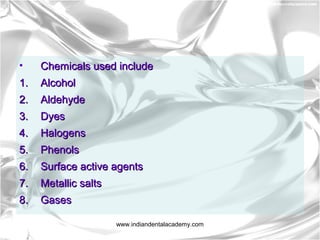

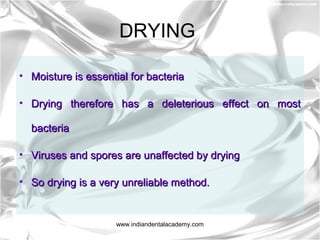















































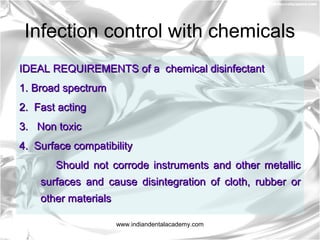



















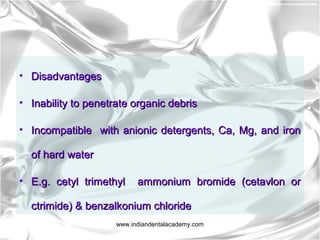
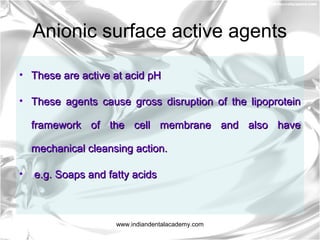

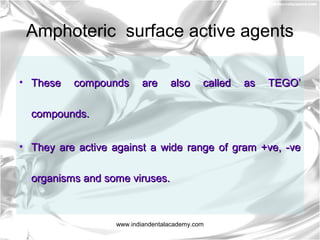





![• Used in water supplies and swimming bathsUsed in water supplies and swimming baths
• Chlorax & purex bleachChlorax & purex bleach used for household sanitationused for household sanitation
& the disinfection of food utensils.& the disinfection of food utensils.
• Chlorinated limeChlorinated lime [NaOCl or Ca (OCl)2] is used as[NaOCl or Ca (OCl)2] is used as
bleaching agent in textile industry.bleaching agent in textile industry.
www.indiandentalacademy.com](https://image.slidesharecdn.com/sterilizationfinal-160719122221/85/Sterilization-final-dental-crown-bridge-courses-92-320.jpg)

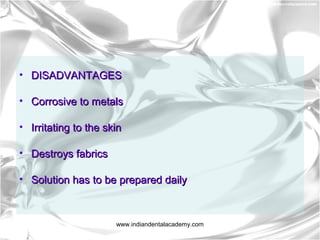











![Cleaning
• All items to be sterilised must be properly cleaned first-All items to be sterilised must be properly cleaned first-
• It reduces the bioburdenIt reduces the bioburden
• A good cleanig agent shouldA good cleanig agent should
1.1. Provide a pH near neutrality]Provide a pH near neutrality]
2.2. Be blood solventBe blood solvent
3.3. Be effective against protein soilBe effective against protein soil
4.4. Offer low surface tension for soil penetrationOffer low surface tension for soil penetration
5.5. Be easy to rinseBe easy to rinse
6.6. Not damage items being cleanedNot damage items being cleaned
7.7. Be tested in hard and soft waterBe tested in hard and soft water
www.indiandentalacademy.com](https://image.slidesharecdn.com/sterilizationfinal-160719122221/85/Sterilization-final-dental-crown-bridge-courses-106-320.jpg)





















